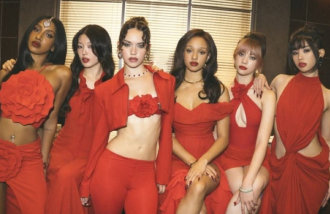Guantanamo Prisoners Stage Hunger Strike
Guantanamo Prisoners Stage Hunger Strike
Posted January. 17, 2009 07:56,
Noor Uthman Mohammed, 22-year-old Sudanese, appeared at a military court at the U.S. Naval Base, Guantanamo Bay in southeast Cuba at 11 a.m. Wednesday.
His traditional Muslim turban and white detainee uniform were in sharp contrast to his black complexion and bushy beard and moustache. Dragged and seated in the dock by a court guard, he shivered with anxiety.
With judge Moira Modzelewski entering the court, the trial began. Because Muhammad could not speak English, he wore headsets for interpretation in the trial.
What do you want to be called? was the first question the judge asked the defendant after confirming his identity.
Muhammad, who was also identified under six different names such as Zamir, Noor and Uthman, served as a weapons instructor at the Khaldan training camp in Afghanistan.
He was indicted in May last year for helping terrorists by delivering a fax machine to Osama bin Laden at a training camp in 1999.
The Sudanese national said he wanted to be called Noor, meaning light in Sudanese.
When the judge was about to begin questioning, his defense counsel asked for a delay.
I am not guilty. I was framed, the defendant said in a growingly loud voice. His attorney also raised an objection, saying, No evidence of a crime has been presented.
In the end, the trial lasted for about an hour but was adjourned without fixing a date for the next trial.
The inauguration of the new U.S. administration is a political change. The military prosecution delivers judgment based on charges, military prosecutor Timothy Cox told reporters after the trial.
On the contrary, attorney Howard Cabot said, Without the media, whose role is to shed light on the truth, rampant human rights abuses in the Guantanamo Bay detention facility cannot be addressed.
Prior to the trial, reporters from The Dong-A Ilbo, The Times of London, CCTV of China, and the Miami Herald arrived Tuesday at the base after a three-hour flight from Andrews Air Force Base in Maryland.
Officials at the Joint Task Force Guantanamo Public Affairs Office ushered the reporters to Camp X-Ray, a temporary detention facility where the first 20 detainees were held in January 2002.
Though Camp X-Ray detained as many as 200 detainees, it was closed in April 2002 in the wake of alleged mistreatment of prisoners. Built like a cluster of chicken cages and easily seen from outside, the facility looked like a livestock breeding house.
Detainees are held at Camps Delta 1 to 3, Camp Echo, Camp Iguana and Camps 4 to 7 located on the sea front.
On the standards for a detainee classification, center spokeswoman Pauline Storum said, Prisoners refusing to abide by the rules are being held at Camps 5, 6 and 7 and those who follow rules are at Camp 4.
Detainees at Camp 4 are allowed to engage in outdoor activities, have meals outside, and take a shower freely.
On the types of violations, Storum said, There are various violations from spitting and throwing excrement at prison guards to beating. We classify detainees by giving them black marks for each violation.
A detainee classified as a risky figure is given an orange uniform rather than an ordinary white one.
When reporters visited the facility, certain detainees staged a hunger strike. If a prisoner skips meals for three days in a row, he or she is deemed to be on a hunger strike.
Forty-four out of 248 detainees (17.7 percent) are refusing meals.
Affected by the impending inauguration of the Obama administration and the fact that seven years have passed since the first inmates arrived here, the number of those on a hunger strike is rising, said Storum. We are force feeding some 33 strikers by stuffing hoses into their noses.
triplets@donga.com





![“설거지해도 그대로”…냄비 ‘무지개 얼룩’ 5분 해결법 [알쓸톡]](https://dimg.donga.com/c/138/175/90/1/wps/NEWS/IMAGE/2026/01/15/133164664.3.png)
![[단독]李대통령 中 향한 날…北 23차례 항공기 GPS 교란했다](https://dimg.donga.com/c/138/175/90/1/wps/NEWS/IMAGE/2026/01/16/133172641.1.jpg)
